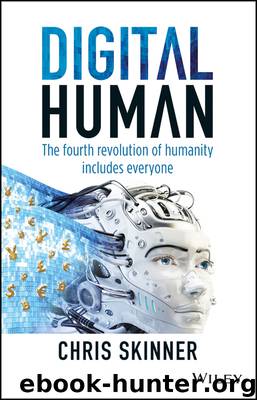Digital Human by Chris Skinner

Author:Chris Skinner
Language: eng
Format: epub
ISBN: 9781119511908
Published: 2018-03-13T14:30:00+00:00
As can be seen, it varies widely and is a reflection of the regulatory structure and enthusiasm to adopt mobile wallets among the banks and MNOs. For example, in Tanzania, twenty-five banks are involved with the MNOs to allow mobile financial inclusion. The process has been supported by the Bill & Melinda Gates Foundation and has resulted in over half of Tanzania's GDP moving through mobile wallets each month. Compare that with Nigeria where 45 per cent of the population have a mobile subscription and yet only 2.3 per cent are using mobile money. Why?
Because not every country is the same. Just because mobile money can succeed in Kenya, Tanzania and Uganda does not naturally mean it will succeed in Nigeria. Nigeria has a large unbanked population who aren't aware of mobile money, for example. Even though the Central Bank of Nigeria has introduced measures to encourage mobile financial inclusion, the introduction of mobile money in the country has been bank-led, rather than MNO-led, and the banks have not done a great job of advertising the capability. For example, a survey by Philip Consulting in 2015 found that over a third of Nigerians weren't aware that they could make payments by mobile and, of those who did, the trust in the network was low as Nigeria is first and foremost a cash-based economy. This is why many will not use electronic transactions but instead prefer to use informal financial providers called esusu, adashe and ajo.
As can be seen, Africa is not a big homogeneous land mass whose citizens all use mobile money, but it is one where mobile money is taking off rapidly. At the end of 2016, 420 million people were unique mobile subscribers in sub-Saharan Africa, according to GSMA's “Mobile Economy Sub-Saharan Africa 2017" report. This is equivalent to a market penetration rate of 43 per cent, and is growing 50 per cent faster than the global average. This means that the region will have more than half a billion unique mobile subscribers by 2020, when around half of the continent's population will subscribe to a mobile service. These numbers are driving a range of new competitive structures.
For example, seeing the success of M-Pesa led to Equity Bank in Kenya launching its own mobile network service Equitel, in partnership with Airtel. As Equitel was offering better rates on payments, savings and transfers, Safaricom, the operator of M-Pesa, launched a legal battle to prevent its launch. When this bid failed, M-Pesa then tried to block Equitel by charging high costs for transfer outside the M-Pesa network. This move on the part of Safaricom is interesting as Safaricom itself was attacked by the banks during its start-up years for fear of fraud and fee losses. These fears were unjustified and resulted in the turnaround of the banks from fighting against M-Pesa to working with it, and then competing with it. Meanwhile, M-Pesa moved from offering basic mobile money transfers to full paperless banking services through M-Shwari.
It is fascinating to watch these changes in Africa, based on mobile enabling all to use the network.
Download
This site does not store any files on its server. We only index and link to content provided by other sites. Please contact the content providers to delete copyright contents if any and email us, we'll remove relevant links or contents immediately.
Enlightenment Now: The Case for Reason, Science, Humanism, and Progress by Steven Pinker(7269)
A Journey Through Charms and Defence Against the Dark Arts (Harry Potter: A Journey Through…) by Pottermore Publishing(4789)
The Immortal Life of Henrietta Lacks by Rebecca Skloot(4546)
A Journey Through Divination and Astronomy by Publishing Pottermore(4362)
Elon Musk by Ashlee Vance(4080)
Origin Story: A Big History of Everything by David Christian(3663)
COSMOS by Carl Sagan(3582)
Alchemy and Alchemists by C. J. S. Thompson(3479)
Bad Pharma by Ben Goldacre(3392)
Enlightenment Now by Steven Pinker(3347)
Shadow of Night by Deborah Harkness(3322)
Inferior by Angela Saini(3291)
A Mind For Numbers: How to Excel at Math and Science (Even If You Flunked Algebra) by Barbara Oakley(3247)
Origin Story by David Christian(3167)
The Code Book by Simon Singh(3108)
Signature in the Cell: DNA and the Evidence for Intelligent Design by Stephen C. Meyer(3097)
The Elements by Theodore Gray(3024)
A Brief History of Time by Stephen Hawking(2989)
A Journey Through Potions and Herbology (A Journey Through…) by Pottermore Publishing(2834)
